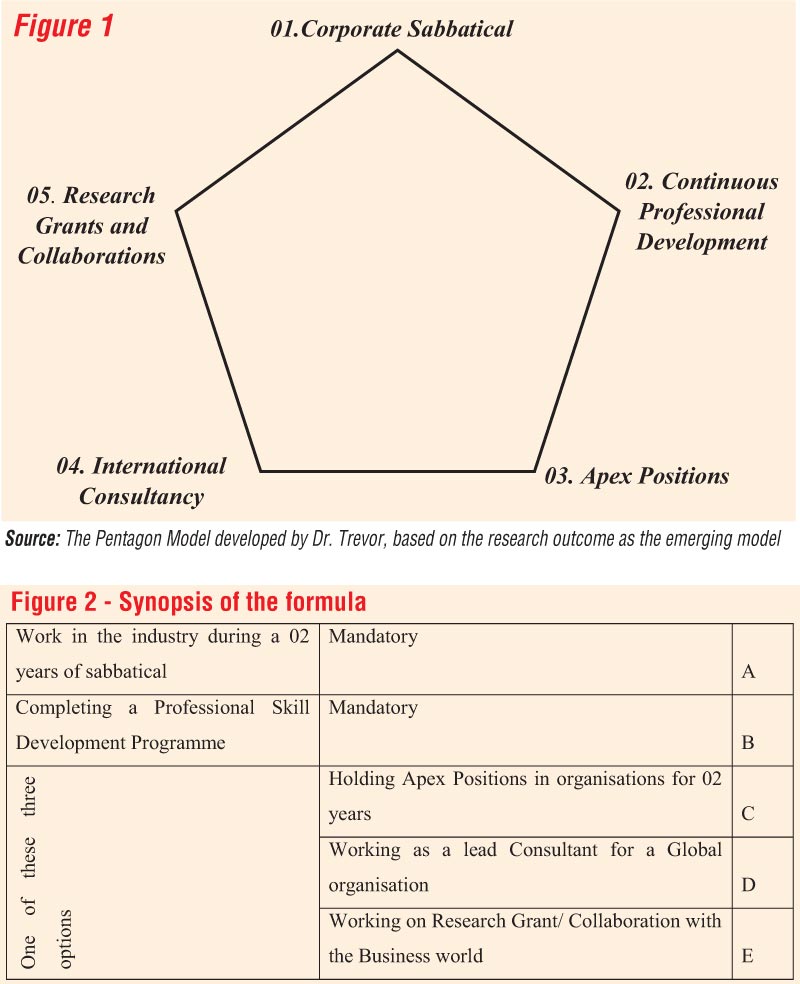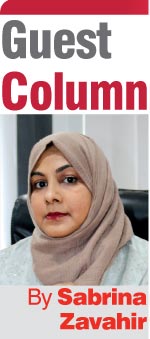Saturday Dec 13, 2025
Saturday Dec 13, 2025
Wednesday, 27 March 2024 00:20 - - {{hitsCtrl.values.hits}}

 In unique and landmark research published in a Scopus Ranked, British based, Journal of Applied Research and Higher Education, Dr. Trevor Mendis has developed a C-index (Corporate index) for academics to bridge the academic-practitioner gap. This C-Index has been developed based on algorithms from the emerging model which is named as the “Pentagon Model”, from the outcome of the research.
In unique and landmark research published in a Scopus Ranked, British based, Journal of Applied Research and Higher Education, Dr. Trevor Mendis has developed a C-index (Corporate index) for academics to bridge the academic-practitioner gap. This C-Index has been developed based on algorithms from the emerging model which is named as the “Pentagon Model”, from the outcome of the research.
Dr. Trevor, who is a master strategist, pracademic and a distinguished alumni of PIM, is a Senior Management Consultant and a Member of the Board of Study, at the Postgraduate Institute of Management (PIM), University of Sri Jayewardenepura. Being a pracademic with over two decades of local and global exposure in the corporate sector at apex level and over one and half decades of local and global academic exposure in all facets, he is of the view that the C-index developed in this research will re-demarcate the landscapes of the academic sphere across the world.
Background of the research
The academic-practitioner gap has been a perennial issue. Having adequately rationalised the arguments and the background for the study, the research focused on three questions, namely, (1) what are the reasons for the academic-practitioner gap? (2) how can the academic-practitioner gap be bridged? (3) what are the suitable and acceptable solutions to close this gap? The research followed all accepted norms and methodologies such as the literature review and the theoretical underpinning. Arguments revealed that the gap has been a perennial issue since yester era and the contemporary evidence reveals that the gap not only exists but, is widening. As a result, the academic research is becoming irrelevant to the business world.
The research followed the qualitative approach and the sample consisted three categories namely the pure academics such as university professors, then the pracademics who have both the academic and the corporate exposure and then the business leaders. Business leaders (practitioners) were selected with those who have conducted research and earned Masters or PhDs as they possess a better knowledge about research and the university system compared to “other” business leaders. A semi structured questionnaire was used for the research and the unit of analysis was the individual.
|
Dr. Trevor Mendis (Ph.D.)
|
Findings of the research
Answering the first question, all respondents, except for two, agreed that there is a definite gap between the academics and the practitioners. Some of the key responses (out of many), for the question are given below in point form for easy absorption for the business and the academic world.
Synopsis of the suggestions made by the respondents for the next question revealed many startling and rich, yet challenging set of suggestions, some of which are stated below.
Based on the suggestions, and upon the thematic analysis, the emerging model (Figure 1) was developed.
Based on this model, working in the industry during sabbatical leave term of two years and gaining professional development skills periodically are mandatory. Fulfilling one of the other three options along with the two mandatory requirements will provide the academics to earn a C-index of one. Fulfilling another cycle will lead to earn a C-index two and so on. For instance, if an academic earning a C-index of two means that the academic has worked in the industry for four years, successfully completed at least two professional development programs and fulfilled at least two from the other three options. Then, by indicating the C-index, the business world knows, the business knowledge and the competences the academics possesses. Universities can also compensate them more. Based on the given model, Dr. Trevor has also developed the following C-index taking algorithms into consideration.
C-index= min (A, B) ˄ (C ˅ D ˅ E)
Synopsis of the above formula is given in Figure 2.
The published article in addition to the theoretical implications, explains this on many dimensions under managerial implications. The article also explains the operationalisation of the C-index and creating and leveraging the required data bases and platforms similar to Google Scholar and Research gate, and the exigency for universities to re-design their goals and KPIs accordingly. The published article can be viewed on URL https://www.emerald.com/insight/content/doi/10.1108/JARHE-08-2023-0357/full/html.
Finally, the research provides an ideal platform for several research in time to dawn, to add more value to the knowledge base, from an array of arenas and many dimensions for future research.